Address
304 North Cardinal
St. Dorchester Center, MA 02124
Work Hours
Monday to Friday: 7AM - 7PM
Weekend: 10AM - 5PM
Address
304 North Cardinal
St. Dorchester Center, MA 02124
Work Hours
Monday to Friday: 7AM - 7PM
Weekend: 10AM - 5PM
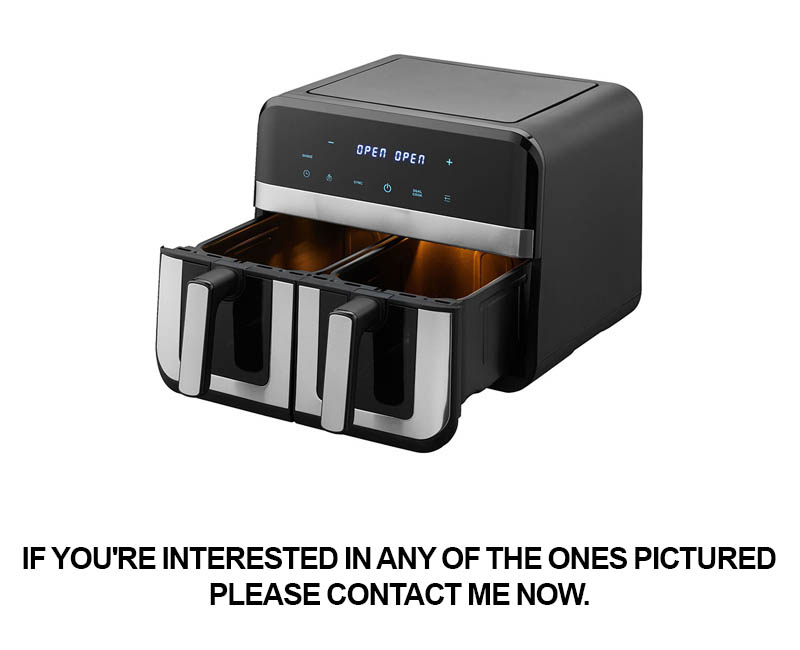
In the ever-evolving landscape of e-commerce, the kitchen appliances industry has seen a surge in demand. As consumers seek convenience and efficiency in their daily lives, the market for innovative and high-quality kitchen gadgets has expanded. This article explores the latest trends, the pivotal role of Lazada and Shopee as dropshipping platforms, and the key attributes that make a dropshipping supplier reliable. We delve into case studies of successful kitchen appliances on these e-commerce giants and offer insights for dropshippers navigating the industry’s challenges. Furthermore, we glimpse into the future trends that are shaping the kitchen appliances market on e-commerce platforms, and how embracing innovation and market insights can lead to success.
The European and American markets have witnessed a remarkable surge in the demand for online kitchen appliances. With the digital revolution reshaping consumer behavior, this sector has emerged as a beacon of opportunity for entrepreneurs and brands alike. The convenience of e-commerce platforms has made it easier than ever for consumers to explore a wide array of kitchen gadgets, from high-tech ovens to compact blenders.
As the pandemic pushed more people towards remote work and home cooking, the popularity of kitchen appliances skyrocketed. Smart kitchens, equipped with internet-connected appliances, are no longer a niche market but a staple in modern households. This shift has not only brought about a rise in sales but has also sparked a wave of innovation, with manufacturers vying to create the next big thing in kitchen technology.
In Europe, countries like Germany, the UK, and Italy have shown a particular affinity for kitchen appliances. German engineering has long been synonymous with quality and reliability, and this reputation has extended to the kitchen appliances sector. The country’s demand for top-of-the-line appliances has been driven by an affluent middle class that values convenience and efficiency.
The UK, with its growing emphasis on home cooking and wellness, has seen a surge in demand for eco-friendly and energy-efficient appliances. Brands that offer sustainable kitchen solutions are gaining traction among environmentally conscious consumers. Italian kitchen appliances, on the other hand, are celebrated for their stylish design and culinary expertise, appealing to both home chefs and aesthetes.
In the United States, the kitchen appliance market is as diverse as the country itself. From the bustling cities to the serene suburbs, Americans are embracing smart kitchens that not only enhance their cooking experience but also offer convenience and control. The integration of smart technology in appliances has made it possible for users to monitor and control their kitchen gadgets from anywhere in the world, a feature particularly appreciated in today’s fast-paced lifestyle.
The American market has also been a breeding ground for innovation, with companies like KitchenAid and Thermador leading the charge. These brands have leveraged technology to create appliances that not only perform well but also offer customization options to cater to individual tastes and kitchen layouts.
The growth of the online kitchen appliances market is also a testament to the power of e-commerce. Platforms like Amazon and eBay have become the go-to destinations for consumers seeking a variety of kitchen appliances. The ease of browsing, comparing prices, and reading reviews online has democratized the market, allowing small businesses and entrepreneurs to compete on a level playing field with established brands.
One of the most significant trends in the online kitchen appliances market is the rise of dropshipping. This model allows sellers to operate without a physical inventory, as the product is purchased directly from a third-party supplier and shipped directly to the customer. For entrepreneurs, this is an attractive business model because it reduces initial investment costs and allows for a more flexible approach to managing inventory.
Lazada and Shopee, two of the leading e-commerce platforms in Southeast Asia, have also emerged as key players in the kitchen appliances market. By connecting manufacturers and suppliers with a vast consumer base, these platforms have become a gateway for brands to enter new markets and reach a broader audience.
In conclusion, the online kitchen appliances market in Europe and America is a vibrant and rapidly evolving landscape. It is driven by a consumer base that values innovation, quality, and convenience. As technology continues to advance and e-commerce platforms grow in prominence, the future of this market looks bright, with endless possibilities for new products and services.

In the ever-evolving landscape of kitchen appliances, innovation has become the key driver for success. Consumers are no longer just looking for basic functionalities; they seek smart, efficient, and aesthetically pleasing products that enhance their daily lives. Here are some of the most intriguing and unique ideas shaping the future of kitchen appliances:
Smart Fridge Integration: Modern fridges are no longer just for storing food. The integration of smart technology allows them to serve as a hub for managing the entire kitchen ecosystem. From tracking food expiration dates to suggesting recipes based on available ingredients, these fridges are becoming the central intelligence of the kitchen.
hands-free Cooking: The advent of voice-activated kitchen appliances has revolutionized the cooking experience. Imagine a stove that adjusts its temperature with a simple command or an oven that starts preheating before you even step into the kitchen. These hands-free features make cooking safer and more convenient for everyone, including the elderly and those with disabilities.
Energy-Efficient Design: As sustainability becomes a top priority, kitchen appliances are being designed with energy efficiency in mind. From LED lighting to programmable settings that minimize energy consumption, these appliances not only reduce utility bills but also contribute to a greener planet.
Personalized Cooking Experience: Smart appliances are now capable of learning your preferences and adjusting their settings accordingly. Whether it’s the perfect roast for your Sunday dinner or the exact temperature for your coffee, these appliances tailor the cooking experience to your personal taste.
Multi-Functional Appliances: The kitchen is no longer just a place for cooking; it’s a hub for entertainment and socializing. Appliances that combine functions, such as a countertop oven that doubles as a bread maker or a coffee machine that also grinds beans, save space and streamline the kitchen routine.
Health and Wellness Integration: Kitchen appliances are increasingly incorporating features that promote health and wellness. From water filters that remove contaminants to blenders that offer nutrient-rich smoothies, these appliances encourage a healthier lifestyle.
Modular Kitchen Systems: The future of kitchen appliances is not just about individual products but about entire systems that work together seamlessly. Modular kitchen systems allow homeowners to customize their kitchen space with appliances that fit their needs and style.
Interactive Cooking Assistants: Think of these as the digital chefs of the future. Interactive cooking assistants provide step-by-step guidance, offer substitutions for ingredients you might not have, and even suggest wine pairings for your meal.
Smart Storage Solutions: Innovative storage solutions are making their way into kitchen appliances. Think of a fridge with intelligent organization systems that help you keep track of your food and reduce waste, or a pantry that suggests what you should cook based on the ingredients you have.
Eco-Friendly Materials: The materials used in kitchen appliances are becoming more environmentally friendly. From recycled steel and plastic to sustainable woods, these appliances not only perform well but also leave a smaller carbon footprint.
These unique ideas for kitchen appliances are just the beginning of a new era in home technology. As consumers continue to demand more from their kitchen tools, the industry will undoubtedly continue to innovate, offering solutions that are not only functional but also a testament to human ingenuity and environmental consciousness.
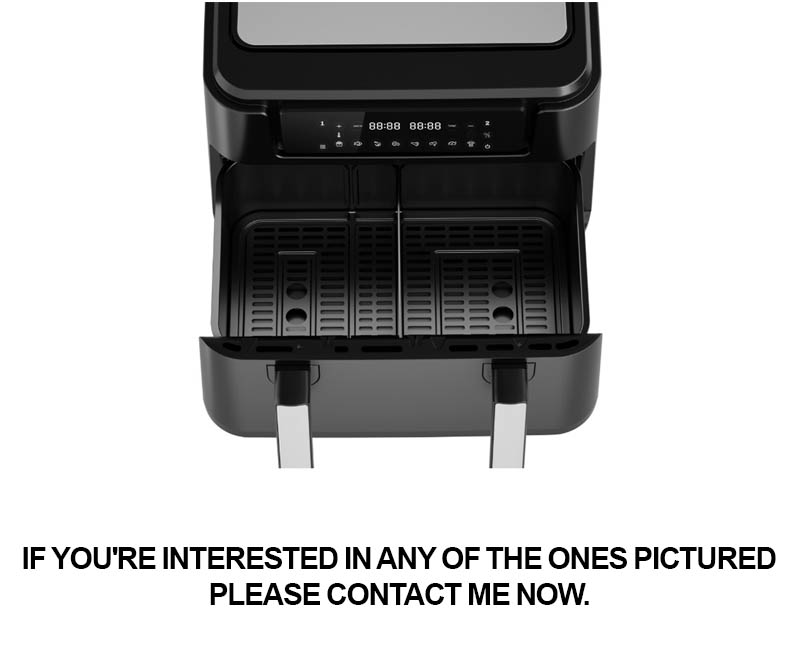
In an ever-evolving market, staying ahead of the curve is paramount, especially in the dynamic world of kitchen appliances. The significance of trend analysis and data-driven insights cannot be overstated, as they serve as the compass guiding the direction of innovation and success.
Consumer preferences are as fickle as they are diverse, and without a keen understanding of these nuances, companies risk missing out on lucrative opportunities. By delving into the latest trends and leveraging data-driven insights, businesses can anticipate market shifts, tailor their products to meet consumer demands, and ultimately, outpace their competitors.
The world of kitchen appliances is no longer just about convenience; it’s about smart living. Smart kitchen gadgets are becoming increasingly popular, with consumers seeking devices that not only simplify tasks but also integrate seamlessly into their smart home ecosystems. This shift towards smart technology has been propelled by advancements in IoT (Internet of Things) and AI (Artificial Intelligence), which have opened up new avenues for innovation.
Analyzing trends in technology adoption is crucial. For instance, the rise of voice assistants has led to a surge in demand for appliances with built-in voice control capabilities. By tracking these trends, companies can develop products that align with this emerging market trend, ensuring they cater to the needs of tech-savvy consumers.
Consumer behavior is another critical area where data-driven insights play a pivotal role. Consumer purchasing patterns, preferences, and usage habits are all valuable data points that can inform product development and marketing strategies. For example, if data reveals a growing preference for energy-efficient appliances, manufacturers can focus on creating eco-friendly models that not only save consumers money but also align with their environmental values.
Moreover, understanding the competitive landscape is essential. Data analytics can provide a clear picture of market share, sales performance, and the performance of different product lines. This information allows companies to identify gaps in the market and capitalize on unmet consumer needs. For instance, if a certain segment of the market is underserved by existing products, this could be an opportunity for a new player to introduce a unique solution that meets those specific requirements.
Social media and online forums are rich sources of consumer sentiment and product feedback. Monitoring these platforms can yield insights into what consumers are talking about and what they value most in kitchen appliances. This real-time data can be invaluable in refining existing products or developing entirely new ones that resonate with the target audience.
In the realm of kitchen appliances, sustainability is a growing concern. Data-driven insights can help companies gauge the environmental impact of their products and materials, ensuring that they are on the right track to meet the demands of eco-conscious consumers. This might involve investing in materials that are recyclable or sourcing components from sustainable suppliers.
Another aspect of trend analysis is keeping an eye on global events and economic fluctuations. These external factors can significantly influence consumer spending and preferences. For example, during economic downturns, consumers may prioritize budget-friendly appliances, while in times of economic growth, they may be more inclined to invest in premium, high-tech models.
The importance of collaboration with industry experts cannot be overlooked. By working with designers, engineers, and marketing professionals who have a deep understanding of market trends, companies can ensure that their products are not only innovative but also consumer-friendly and market-ready.
Lastly, the integration of big data analytics into the product development process is becoming more common. Advanced analytics can predict future trends based on historical data, allowing companies to stay one step ahead of the market. This predictive capability is particularly valuable in a fast-paced industry like kitchen appliances, where staying relevant is key to long-term success.
In conclusion, the fusion of trend analysis and data-driven insights is a powerful tool for any kitchen appliance company looking to thrive in the competitive landscape. By understanding the market, anticipating consumer needs, and leveraging data to inform decisions, businesses can create products that resonate with their audience, drive sales, and establish a strong market presence.
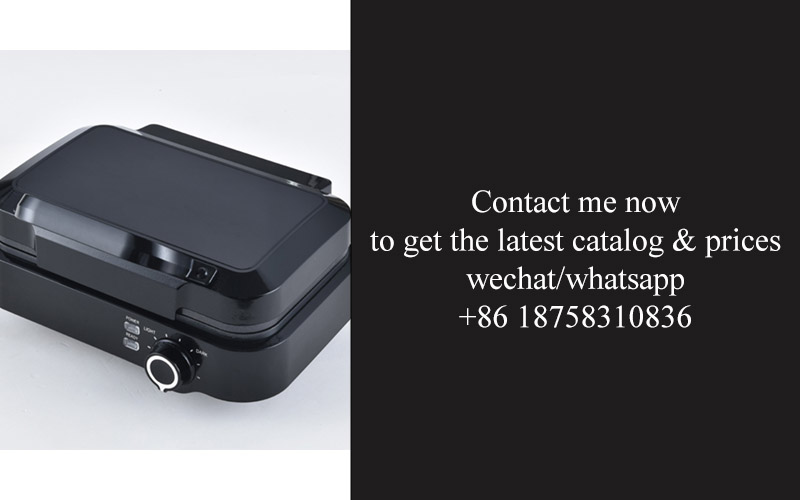
In the ever-evolving landscape of e-commerce, Lazada and Shopee have emerged as powerful platforms for dropshipping suppliers, offering a unique blend of reach, user engagement, and technological support. Here’s a closer look at what makes these platforms the go-to destinations for those looking to enter the dropshipping market.
Shopee, a Singaporean e-commerce giant, has made a significant impact in Southeast Asia, serving as a marketplace for millions of users across the region. Its user-friendly interface and robust mobile app have made it particularly popular among young consumers, who are the backbone of the dropshipping industry. With a focus on local markets, Shopee provides an excellent opportunity for suppliers to tap into a diverse consumer base with varying tastes and preferences.
Lazada, on the other hand, is a regional e-commerce platform that operates across Southeast Asia and India. It’s known for its expansive product range, competitive pricing, and a strong emphasis on customer service. As one of the leading players in the region, Lazada has built a reputation for reliability and efficiency, making it an attractive choice for dropshipping suppliers seeking to expand their operations.
One of the key advantages of both Lazada and Shopee is their extensive reach. They have a vast network of warehouses and delivery partners that ensure quick and reliable shipping to customers. This logistical infrastructure is crucial for dropshipping, as it minimizes the risk of stockouts and delays, which can significantly impact customer satisfaction.
For dropshipping suppliers, both platforms offer a user-friendly dashboard that simplifies the process of listing products, managing orders, and tracking shipments. This ease of use is particularly appealing to those new to the dropshipping business, as it reduces the learning curve and allows them to focus on growing their business rather than navigating complex e-commerce systems.
Lazada and Shopee also provide valuable marketing tools that can help suppliers boost their product visibility and drive sales. These tools include social media integrations, search engine optimization (SEO) assistance, and targeted advertising campaigns. By leveraging these resources, dropshipping suppliers can effectively reach their target audience and increase their chances of success.
Another aspect that sets Lazada and Shopee apart is their community-driven approach. Both platforms encourage user engagement through reviews, ratings, and feedback, which can be invaluable for suppliers looking to understand customer preferences and improve their product offerings. This open feedback loop not only helps suppliers refine their product lines but also fosters a sense of trust and loyalty among customers.
When it comes to payment options, both Lazada and Shopee offer a variety of secure payment methods, including credit cards, mobile payments, and cash on delivery. This flexibility ensures that customers can choose a payment method that suits their preferences, which is essential for a seamless shopping experience.
Moreover, Lazada and Shopee have been proactive in adapting to the changing demands of the market. They have introduced new features and services that cater to the evolving needs of both suppliers and customers. For instance, Lazada’s “LazMall” initiative brings together premium brands and retailers, creating a diverse and high-quality product selection that appeals to a broader customer base.
Shopee’s “ShopeePay” service, on the other hand, has become a popular payment and financial service platform, offering services like bill payments, insurance, and even micro-loans. This expansion into financial services not only enhances the shopping experience but also opens up new revenue streams for dropshipping suppliers.
In terms of customer support, both Lazada and Shopee offer comprehensive assistance to their suppliers. They provide training materials, customer service hotlines, and dedicated account managers to help navigate any challenges that may arise. This level of support is crucial for dropshipping suppliers, who may not have direct control over the customer experience.
Lastly, the scalability of Lazada and Shopee is a significant draw for dropshipping suppliers. These platforms can handle large volumes of orders, making them suitable for businesses looking to scale quickly. Whether a supplier is just starting out or aiming to expand their operations, these e-commerce giants offer the resources and infrastructure needed to support growth.
In conclusion, Lazada and Shopee have become the go-to platforms for dropshipping suppliers due to their extensive reach, user-friendly interfaces, marketing tools, community-driven approach, payment flexibility, adaptation to market trends, comprehensive customer support, and scalability. For those looking to enter the dropshipping market or expand their operations, these platforms offer a solid foundation for success.
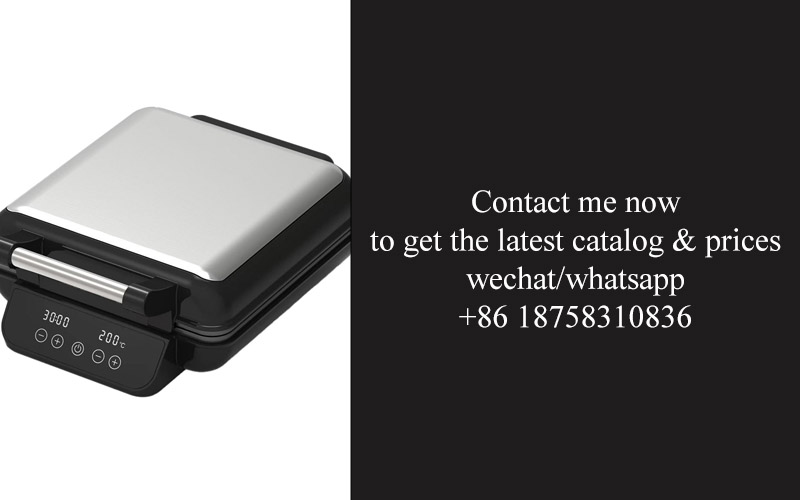
Navigating the vast digital marketplace can be daunting, especially when looking for reliable dropshipping suppliers on platforms like Lazada and Shopee. Here’s a guide to help you pinpoint the best suppliers for your needs:
Define Your NicheBefore diving into the vast ocean of suppliers, it’s crucial to identify your target audience and the specific kitchen appliances niche you want to cater to. Whether it’s high-end gadgets or budget-friendly essentials, having a clear niche allows you to focus on suppliers that align with your product offerings.
Check Supplier Ratings and ReviewsLazada and Shopee offer a wealth of information through customer reviews and ratings. Look for suppliers with consistently high ratings and positive feedback. Pay attention to both the quantity and quality of reviews to gauge the reliability of the supplier.
Evaluate Product Range and QualityA good dropshipping supplier should have a diverse product range that meets the demands of your niche. Look for suppliers that offer a variety of kitchen appliances, from countertop mixers to smart ovens. Additionally, inspect the product images and descriptions for clarity and detail. If possible, check for certifications that indicate the quality and safety of the products.
Test the CommunicationCommunication is key in the dropshipping business. Reach out to potential suppliers with questions about their products, shipping times, and policies. A responsive supplier that provides clear and helpful answers is a sign of professionalism and dedication to customer service.
Look for Customization OptionsYour customers are looking for unique items that stand out from the competition. Seek out suppliers who offer customization options, such as branded packaging or personalized product options. This can add significant value to your offerings and help differentiate your store.
Analyze Pricing StructureCompare the prices of similar products across different suppliers. While it’s tempting to go with the cheapest option, remember that quality and reliability are often worth the extra cost. Look for suppliers who offer competitive pricing without compromising on quality.
Check for Bulk Ordering and Minimum Order QuantitiesUnderstanding the supplier’s policies on bulk orders and minimum order quantities is important. If you plan to scale your business, you’ll want to work with suppliers who can accommodate larger orders without exorbitant costs or minimums that might limit your inventory.
Verify Their Logistics and Shipping CapabilitiesA key aspect of dropshipping is the logistics and shipping process. Ensure that the supplier can handle shipping efficiently and within a timeframe that works for your customers. Check for any additional fees, such as shipping insurance or expedited shipping options.
Look for Integration FeaturesMany suppliers offer integration with Lazada and Shopee’s platforms, allowing for seamless order fulfillment and inventory management. This integration can save you time and reduce the risk of errors, making it a valuable feature to look for.
Keep an Eye on Market TrendsStay informed about the latest trends in kitchen appliances. This will help you identify popular products and anticipate future demand. A good supplier should also be aware of these trends and be able to offer you products that align with current market interests.
Build Long-Term RelationshipsOnce you find a reliable supplier, consider building a long-term relationship. A good supplier can provide you with exclusive deals, early access to new products, and ongoing support as your business grows.
Trust Your InstinctsAt the end of the day, trust your instincts. If a supplier seems too good to be true, or their communication is lackluster, it might be worth looking elsewhere. Your intuition can often guide you towards the best suppliers.
By following these steps, you’ll be well on your way to finding the best dropshipping suppliers on Lazada and Shopee. Remember, the right supplier can make all the difference in your e-commerce journey.
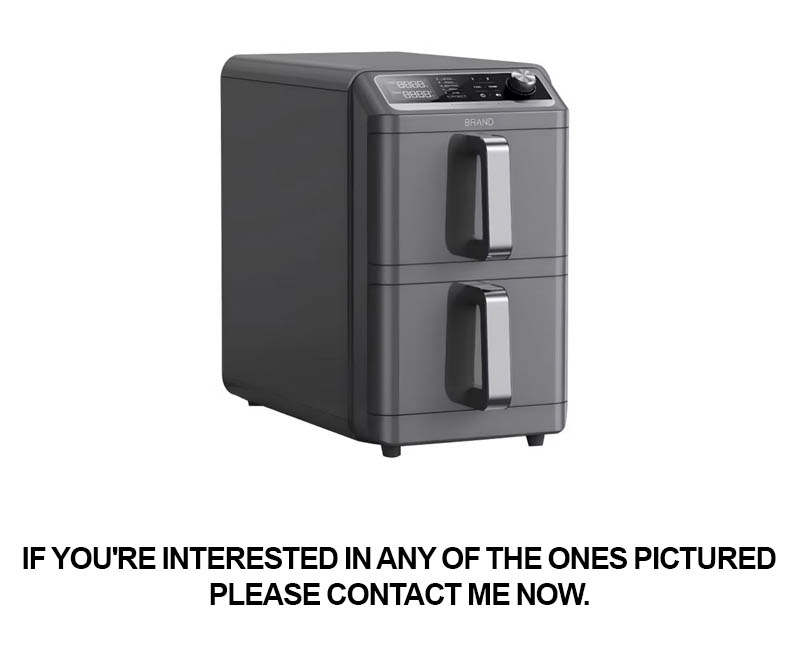
Navigating the world of dropshipping suppliers can be a daunting task, especially when it comes to finding a reliable partner for your online kitchen appliances business on platforms like Lazada and Shopee. Here are some key features to consider when seeking out the best supplier for your needs:
Product Quality and VarietyA reliable dropshipping supplier should offer a wide range of high-quality kitchen appliances. Look for suppliers that have a diverse catalog, ensuring you can cater to various customer preferences and needs. Check for detailed product descriptions, high-resolution images, and customer reviews to gauge the quality of the items.
Competitive PricingWhile it’s important to offer competitive prices to attract customers, you also need to ensure that the supplier’s pricing is reasonable and allows you to maintain a healthy profit margin. Compare prices with other suppliers and consider the overall value you’re getting, including shipping costs and any additional services.
Fast and Reliable ShippingDropshipping success hinges on the ability to deliver products quickly and efficiently. A good supplier will have a streamlined shipping process, with clear communication about expected delivery times. Look for suppliers that offer expedited shipping options and have a history of on-time deliveries.
Responsive Customer ServiceWhen issues arise, such as order cancellations or customer inquiries, a reliable supplier will have a responsive customer service team. They should be able to address concerns promptly and professionally. Check for customer service ratings, reviews, and the availability of support channels like email, chat, or phone.
Secure Payment ProcessingEnsure that your dropshipping supplier offers secure payment processing to protect both you and your customers. Look for suppliers that use reputable payment gateways and have clear policies regarding refunds and returns.
Order Fulfillment EfficiencyA key indicator of a reliable supplier is their order fulfillment efficiency. They should be able to process orders quickly and accurately, minimizing errors and delays. Consider suppliers that use automated systems to manage inventory and order processing.
Customization OptionsCustomers appreciate unique and personalized products. A supplier that offers customization options, such as branded packaging or personalized product features, can give you a competitive edge. This can also help in building brand loyalty and customer satisfaction.
Clear CommunicationA supplier who communicates effectively is crucial for a smooth dropshipping experience. They should provide clear information about product specifications, order status, and any changes or updates. Regular updates and transparency can prevent misunderstandings and build trust.
Inventory ManagementA reliable supplier will have a good inventory management system in place. This means they can provide real-time stock updates, ensuring that you don’t list products that are out of stock. Good inventory management also helps in avoiding overstocking, which can tie up your capital.
After-Sales SupportEven after the product is delivered, a reliable supplier should offer after-sales support. This could include handling returns, exchanges, or dealing with defective items. A supplier that takes responsibility for customer satisfaction can be a valuable partner.
Market Trends and Product InnovationA supplier who stays on top of market trends and product innovation can provide you with a competitive edge. They should be able to suggest new products or modifications to existing ones that align with current consumer demands.
Legal Compliance and Ethical PracticesEnsure that your supplier complies with all legal regulations and ethical practices. This includes fair labor practices, environmental responsibility, and adherence to safety standards. A supplier with a strong ethical stance can enhance your brand’s reputation.
By carefully evaluating these key features, you can find a dropshipping supplier that aligns with your business goals and provides a seamless experience for both you and your customers. Remember, the right supplier can make all the difference in your dropshipping journey.
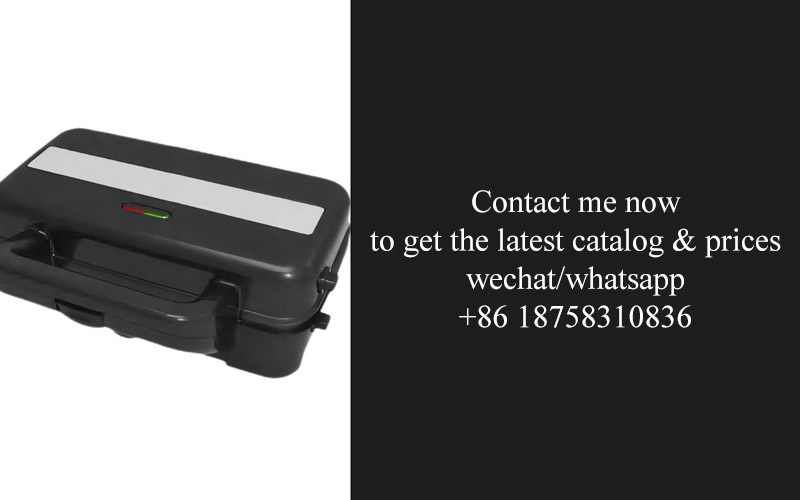
In the world of online retail, kitchen appliances have become a hot commodity, especially on platforms like Lazada and Shopee. Let’s delve into some case studies of successful kitchen appliance products that have thrived on these e-commerce giants.
The Smart Blender That Turned HeadsA compact, multi-functional blender that promised to blend, chop, and puree with ease quickly became a top seller on Lazada. Its sleek design and the promise of a “kitchen in a jar” caught the eye of customers. The product’s success can be attributed to its high-quality components, which ensured durability, and the brand’s effective use of social media influencers to showcase the blender in action.
The Eco-Friendly Pressure Cooker That Sold OutAn eco-friendly pressure cooker made from sustainable materials was a hit on Shopee. The product’s tagline, “Cook Faster, Save Energy,” resonated with environmentally conscious consumers. The brand’s focus on sustainability and its commitment to reducing carbon footprints were key factors in its popularity. The case study highlighted the importance of aligning a product’s messaging with the values of its target audience.
The Compact Toaster Oven That Saved Counter SpaceA space-saving toaster oven that promised to fit into any kitchen was a standout on Lazada. Its compact size and versatile functions, including a broil and convection setting, made it a must-have for small apartments and dorm rooms. The brand’s clever marketing strategy, which included a series of “before and after” photos showing how the oven transformed kitchen countertops, played a significant role in its success.
The Innovative Slow Cooker That Kept Food Warm and TastyA slow cooker that not only cooked food but also kept it warm for up to 12 hours was a game-changer on Shopee. The product’s unique feature was its programmable timer, allowing customers to set the cooking time and forget about it. The brand leveraged customer testimonials and provided detailed recipes to showcase the versatility of the slow cooker, making it a go-to appliance for busy families and working professionals.
The Energy-Saving Coffee Maker That Brewed SuccessAn energy-efficient coffee maker that promised to save on electricity bills became a bestseller on Lazada. The product’s design was sleek and modern, appealing to the tech-savvy consumer. The brand’s use of smart technology, such as a built-in Bluetooth speaker and a smartphone app for remote brewing, set it apart from competitors. The case study emphasized how innovation can drive sales and customer loyalty.
The Healthy Smoothie Maker That Promoted WellnessA blender that came with pre-programmed smoothie settings and a detachable bowl for easy cleaning became a hit on Shopee. The brand’s focus on health and wellness was evident in its marketing, which included fitness influencers and healthy lifestyle bloggers. The product’s ease of use and its ability to promote a healthy lifestyle were key factors in its success.
The Mini Fridge That Solved Storage IssuesA compact fridge designed for small spaces, such as offices and RVs, became a top-selling item on Lazada. The brand addressed a common pain point for consumers who needed additional storage without taking up too much room. The fridge’s sleek design and efficient cooling capabilities made it an essential purchase for those looking to maximize their living space.
The Smart Kitchen Scale That Changed How We MeasureA kitchen scale that connected to a smartphone app and offered detailed nutritional information became a hit on Shopee. The product’s unique selling proposition was its ability to track food intake and suggest healthier alternatives. The brand’s focus on health and technology resonated with a wide audience, and the ease of use made it a must-have for health-conscious consumers.
The case studies of these successful kitchen appliances on Lazada and Shopee highlight the importance of understanding customer needs, leveraging technology, and aligning product features with market trends. Whether it’s through innovative design, sustainability, or smart technology, these brands have shown that the right approach can lead to significant success in the online kitchen appliances market.

Understanding the intricacies of the kitchen appliances industry can be daunting, especially for dropshippers. Here’s a closer look at some common challenges and practical tips to navigate them successfully:
Quality Control: Ensuring that the products you’re selling meet high standards is crucial. Look for suppliers who offer detailed product descriptions, high-resolution images, and customer reviews. Don’t hesitate to request samples to verify the quality before making a bulk order.
Lead Times: Managing inventory and lead times is a balancing act. Communicate clearly with your suppliers about production and shipping times. Consider setting up a buffer period to account for any unforeseen delays.
Customer Service: In the kitchen appliances industry, customer satisfaction is paramount. Choose suppliers that provide excellent customer service, including responsive communication and a willingness to resolve issues promptly.
Market Trends: Stay informed about the latest trends in kitchen appliances. This knowledge can help you anticipate customer needs and differentiate your offerings. Follow industry blogs, social media, and market research reports to stay on top of new products and features.
Product Selection: Diversify your product range to cater to different customer preferences. Look for suppliers who offer a variety of kitchen appliances, from high-end gadgets to essential tools. This approach can help you capture a broader market share.
Pricing Strategy: Price your products competitively while ensuring you’re making a profit. Research competitors’ pricing and consider your target audience’s purchasing power. Don’t forget to account for shipping costs and any additional fees associated with dropshipping.
Marketing and Branding: Develop a strong online presence and brand identity. Use high-quality images and compelling product descriptions to attract customers. Leverage social media, influencer partnerships, and SEO to boost your visibility.
Returns and Refunds: Be prepared for returns and refunds, as they are a common occurrence in the dropshipping business. Work with suppliers who have a clear returns policy and ensure your customers are aware of the process.
Inventory Management: Keep a close eye on your inventory levels. Use inventory management tools to track stock and automate reordering when necessary. This prevents overstocking and stockouts, both of which can be costly.
Legal Compliance: Ensure that the products you’re selling comply with local and international regulations. This includes safety standards, certifications, and labeling requirements. A reliable supplier should be able to provide documentation to prove compliance.
Building Relationships: Cultivate strong relationships with your suppliers. Regular communication and feedback can lead to better service and potentially exclusive deals. Suppliers who value your business are more likely to go the extra mile.
Adaptability: The kitchen appliances industry is constantly evolving. Be ready to adapt to new technologies, materials, and consumer preferences. Staying flexible allows you to pivot your business strategy when needed.
Financial Management: Keep detailed records of your income and expenses. This includes tracking shipping costs, payment fees, and any other business-related expenses. Good financial management ensures you’re making a profit and can scale your business effectively.
Customer Feedback: Regularly collect and analyze customer feedback. This information is invaluable for improving your product offerings and customer experience. Consider setting up a feedback system or using online review platforms to gather insights.
Continuous Learning: The dropshipping landscape is always changing. Stay informed about new tools, platforms, and strategies that can help you grow your business. Continuous learning ensures you’re always one step ahead of the competition.
By addressing these challenges with these tips in mind, dropshippers in the kitchen appliances industry can build a sustainable and profitable business. Remember, the key is to be proactive, informed, and ready to adapt to the ever-changing market dynamics.

In the ever-evolving world of e-commerce, kitchen appliances are not just tools for daily life but also a reflection of consumer trends and technological advancements. As we look ahead, several future trends are poised to shape the landscape of kitchen appliances on e-commerce platforms. Here’s a glimpse into what might be next:
Smart Integration and ConnectivityThe kitchen of the future will be more than just a collection of appliances; it will be a smart ecosystem. Expect to see a surge in kitchen appliances that can connect to each other and to the home’s smart systems. Think of refrigerators that can sync with your phone to remind you of groceries, or ovens that can be controlled remotely via an app.
Eco-Friendly and Sustainable DesignsWith growing environmental concerns, there’s a shift towards eco-friendly kitchen appliances. These will include energy-efficient models that consume less power and are made from sustainable materials. The emphasis will be on reducing the carbon footprint of kitchen appliances throughout their lifecycle.
Personalization and CustomizationE-commerce platforms will likely offer more personalized experiences, allowing customers to customize their kitchen appliances. This could range from selecting specific features to designing the appliance’s appearance to match the kitchen’s decor. Personalization will become a key differentiator for brands looking to stand out in a crowded market.
Health and Wellness FeaturesAs health and wellness become more integral to daily life, kitchen appliances will likely incorporate features that support these goals. We might see appliances that can provide nutritional information, help in meal planning, or even offer recipes based on ingredients you have on hand.
Voice-Controlled AppliancesVoice assistants have become a staple in many homes, and the kitchen is no exception. Future kitchen appliances may come with voice control capabilities, allowing users to manage their appliances hands-free. This could include turning on the coffee maker, adjusting the oven temperature, or even ordering new products online.
Augmented Reality (AR) for Enhanced Shopping ExperienceE-commerce platforms could leverage AR to enhance the shopping experience for kitchen appliances. Customers could use their smartphones or tablets to visualize how a new fridge or stove would look in their kitchen before purchasing.
Subscription Models for Appliance MaintenanceSimilar to the rise of subscription services for streaming services and software, we might see a shift towards subscription models for kitchen appliance maintenance. This could include regular cleaning, repairs, and even updates to ensure the appliance remains efficient and effective over time.
Increased Focus on User ExperienceWith the rise of online shopping, the user experience is paramount. Kitchen appliance brands will need to focus on providing seamless online shopping experiences, from easy navigation and detailed product descriptions to hassle-free returns and exchanges.
Data-Driven Marketing and SalesThe ability to collect and analyze data will be crucial for kitchen appliance brands. By understanding consumer behavior and preferences, companies can tailor their marketing strategies and product offerings to meet the demands of their target audience more effectively.
Global Expansion OpportunitiesAs e-commerce platforms continue to break down geographical barriers, kitchen appliance brands will have the opportunity to expand their reach globally. This means adapting to different cultural preferences and regulatory standards, but also tapping into new markets with varying levels of technological adoption.
The Role of Social Media and InfluencersSocial media will play a significant role in the promotion of kitchen appliances. Influencers and content creators will be key in showcasing the latest innovations and trends, influencing consumer purchasing decisions.
A Shift Towards Modular and Compact AppliancesGiven the changing demographics and the trend towards smaller living spaces, modular and compact kitchen appliances are likely to become more popular. These appliances can be easily reconfigured and are perfect for urban homes and smaller kitchens.
By keeping an eye on these trends, dropshippers and retailers in the kitchen appliances industry can stay ahead of the curve and offer products that not only meet but exceed consumer expectations. The future of kitchen appliances on e-commerce platforms is bright, with endless possibilities for innovation and growth.

In wrapping up, the landscape of kitchen appliances on e-commerce platforms is rapidly evolving. The fusion of innovation and market insights is paramount for any brand aiming to thrive in this dynamic sector. Brands that stay nimble and responsive to consumer demands will be the ones that not only survive but excel.
The rise of smart kitchen gadgets, for instance, indicates a shift towards automation and convenience. As consumers seek out appliances that not only perform their basic functions but also offer connectivity and customization, brands must focus on integrating cutting-edge technology without losing sight of user-friendliness.
Customization is another key trend. Tailoring products to specific preferences and needs is not just a nice-to-have; it’s becoming a necessity. From color options to personalized settings, the ability to offer a tailored experience can set a brand apart in a crowded marketplace.
Sustainability is also on the rise, with more consumers looking for appliances that are environmentally friendly. Brands that can demonstrate a commitment to sustainability, whether through eco-friendly materials or energy-efficient designs, will likely gain a loyal customer base.
Innovation in packaging is equally important. As the e-commerce experience becomes more streamlined, how products are presented and protected during shipping can make or break the customer’s first impression. Brands that invest in sustainable, protective packaging solutions will not only reduce waste but also appeal to eco-conscious consumers.
The importance of analytics and data cannot be overstated. Brands that harness the power of data to understand customer behavior and preferences can make informed decisions that drive sales and customer satisfaction. From tracking product performance to analyzing customer feedback, the insights gained can lead to targeted marketing campaigns and product improvements.
Collaboration with influencers and content creators is also becoming a vital strategy. By leveraging the reach and credibility of these individuals, brands can tap into niche markets and reach consumers who might not be as easily accessible through traditional marketing channels.
The rise of subscription services is another trend worth noting. Offering customers a subscription model for their kitchen appliances can lead to a more consistent revenue stream and foster long-term customer relationships. This approach allows for the continuous introduction of new features and functionalities, keeping the products fresh and relevant.
Lastly, the globalization of e-commerce platforms is opening up new opportunities for kitchen appliance brands. As more consumers around the world turn to online shopping, brands that can navigate international markets effectively will find a vast, untapped audience.
In conclusion, success in the kitchen appliances industry on e-commerce platforms hinges on a combination of innovation, market insights, and strategic planning. By staying attuned to these trends and embracing the changing landscape, brands can not only meet the demands of today’s consumers but also pave the way for future growth and sustainability.